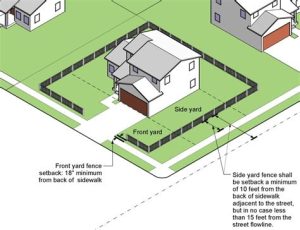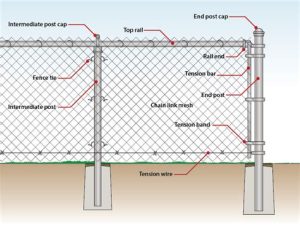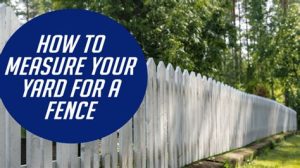Navigate local government regulations, zoning restrictions, property line rules, and building requirements with expert insight for successful project planning and compliance.When it comes to installing a fence on your property, understanding local ordinances is crucial for ensuring compliance and avoiding potential disputes. Local government regulations can vary significantly from one area to another, and being informed about these guidelines can save you time, money, and headaches down the line. In this blog post, we will guide you through the essential steps for researching local ordinances related to fence installation. From identifying zoning restrictions and property line regulations to exploring height and material requirements, we’ll help you navigate the complexities of local laws. Additionally, we’ll emphasize the importance of consulting with your local building department to ensure that your fencing project aligns with community standards. Whether you’re looking to enhance privacy, aesthetics, or security, this comprehensive overview will equip you with the knowledge needed to proceed with confidence.
Understanding Local Government Regulations
When it comes to installing a fence, understanding local government regulations is crucial. These regulations can vary significantly from one municipality to another, influencing your design, placement, and even the materials you can use. It’s essential to familiarize yourself with these rules to avoid any potential legal issues or unexpected costs.
- Zoning requirements
- Height restrictions
- Material specifications
- Setback distances
Before you proceed with your fence project, take the time to review these regulations carefully. You can often find this information through your local city or county website, or you may contact your local planning office directly. Staying informed about local government regulations can not only save you time but also ensure a smoother installation process.
Identifying Zoning Restrictions and Requirements
When considering the installation of a fence, understanding the zoning restrictions and requirements in your area is crucial. Zoning laws vary immensely from one locality to another, impacting everything from fence height to materials used. Before moving forward with your project, it’s essential to familiarize yourself with these regulations.
Most municipalities have specific guidelines that dictate the type and height of fences allowed in various zoning districts. For example, residential zones may permit fences up to a certain height, while commercial zones might impose different restrictions. It is advisable to consult a local zoning map or official documents to ensure compliance with these regulations.
Additionally, some municipalities may have special zoning overlays or historic district designations that affect fence installation. This could include requirements for materials to maintain the aesthetic character of an area. Always check with your local government or zoning office to get a comprehensive understanding of what is permissible before starting your fence project.
Reviewing Property Line Regulations
When considering fence installation, reviewing property line regulations is crucial to ensure compliance and avoid potential disputes with neighbors. Each locality might have its own specific rules regarding how close a fence can be to the property line, which can significantly impact your design and placement.
Before proceeding with your fence project, it’s advisable to obtain a property survey. This document helps clarify your land boundaries and establishes the exact location of your property line. Many municipalities require a survey to ensure that your fence does not encroach on neighboring properties. It’s always wise to consult with a professional surveyor if there’s any uncertainty about your boundaries.
In addition to surveys, some local ordinances may dictate the height and type of fencing allowed near property lines. For instance, a fence might be permitted at a certain height in the backyard but restricted when it comes to front yard installations. Therefore, it’s essential to familiarize yourself with the specific regulations of your local jurisdiction to avoid fines or having to remove installations that don’t comply.
Failure to follow these guidelines can lead to legal disputes with neighbors or additional fees, so always take the time to research and understand the regulations before starting your installation. By doing so, you not only ensure a smooth installation process but also foster good relationships with your neighbors.
Exploring Height and Material Restrictions
When planning to install a fence, it is crucial to consider height and material restrictions set forth by local ordinances. These regulations are designed to ensure that fences are both functional and aesthetically pleasing, maintaining the overall character of the neighborhood. By adhering to these guidelines, homeowners can avoid potential conflicts with local authorities and create a cohesive environment.
The maximum height of fences can vary significantly depending on the area, the type of property, and the purpose of the fence. For instance, a privacy fence in a residential zone may have a different height limit compared to a fence in a commercial area.
| Zone Type | Maximum Height |
|---|---|
| Residential | 6 feet |
| Commercial | 8 feet |
| Industrial | 10 feet |
In addition to height, local governments may also impose restrictions on the materials used for fencing. Common materials such as wood, vinyl, and chain link each come with specific regulations. For example, certain areas may require fences to be made of non-combustible materials to improve safety standards, especially in fire-prone zones.
Consulting with Local Building Department
When considering any type of construction project, including fence installation, consulting with the local building department is an essential step. These departments are responsible for enforcing local regulations and codes that ensure safety and compliance within the community.
Before beginning your fence project, it is advisable to set up an appointment with your local building department. During this meeting, you can ask specific questions regarding permitting requirements, crucial zoning laws, and any specific restrictions that may apply to your property. Having a clear understanding of these elements will help you avoid potential legal issues later on.
- What type of permit is required for fence installation?
- Are there specific height restrictions for fences in my area?
- Do I need to submit a site plan or other documentation?
- What are the setbacks required from property lines?
- Are there any restrictions on the materials I can use?
By proactively engaging with the local building department, you ensure that your fence installation complies with all relevant laws, ultimately leading to a smoother construction process and greater peace of mind.
Frequently Asked Questions
What are local ordinances?
Local ordinances are laws or regulations established by local government authorities that govern various aspects of community life, including property use and construction.
Why is it important to research local ordinances before installing a fence?
Researching local ordinances is crucial to ensure compliance with regulations that dictate where you can install a fence, its height, materials, and any necessary permits required.
How can I find the local ordinances for my area?
You can find local ordinances by visiting your municipality’s website, contacting local zoning offices, or checking with your homeowners’ association if applicable.
What are common restrictions related to fence installation?
Common restrictions may include height limits, specific materials allowed, setbacks from property lines, and requirements for maintaining the aesthetics of the neighborhood.
Do I need a permit to install a fence?
In many areas, you may need a permit to install a fence, especially if it exceeds a certain height or is placed in a front yard; it’s essential to check local regulations.
What should I do if my fence violates local ordinances?
If your fence violates local ordinances, you may need to make adjustments to bring it into compliance, which could involve modifying or removing the fence and possibly facing fines.
Can local ordinances change over time?
Yes, local ordinances can change, so it’s a good idea to periodically check with local authorities to stay updated on any new regulations that may affect your fence installation.





